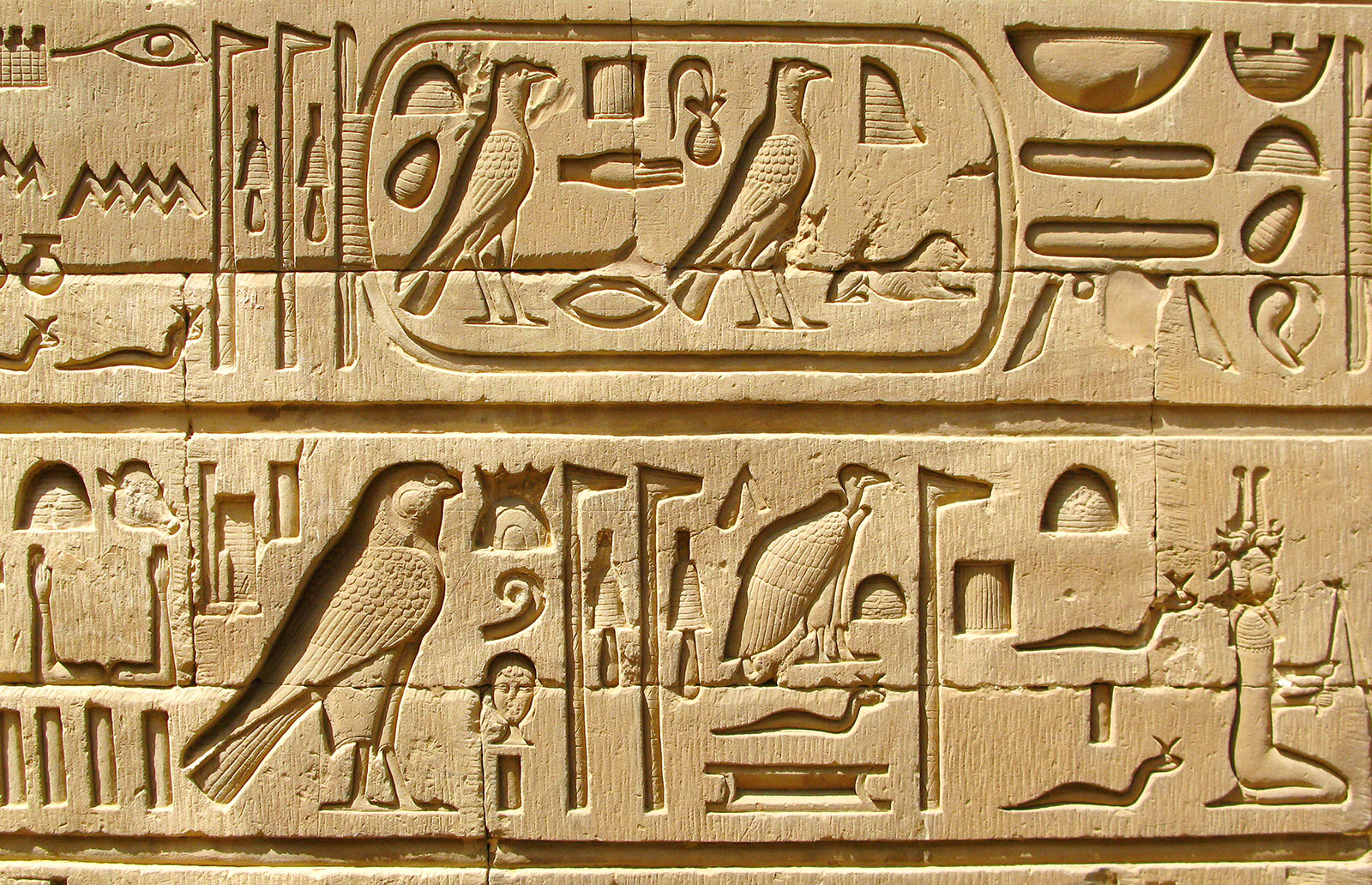
Photograph of the Stela of the Gatekeeper Maati depicting Maati holding a jar of sacred oil at an offering table and traditional passages written in ancient Egyptian hieroglyphics , ca. 2051-2030 B.C., Thebes, Egypt, BBC.
Over 5,000 years ago in ancient Egypt, the hieroglyphic pictorial script was used as a written representation of the language they spoke. Hieroglyphics are sacred texts that are believed to be created by God. The hieroglyphic script is composed of three different types of signs, known as phonograms, logograms, and determinatives. The earliest hieroglyphics are dated back to 3200-3000 BCE. As time progressed, hieroglyphics were simplified and three types of the script emerged: hieroglyphics, hieratic, and demotic. Greek and Roman culture had become popular in Egypt by 332 BCE, resulting in many ancient Egyptians converting to Christianity. These Christian Egyptians began developing the Coptic alphabet, which slowly started to replace the Egyptian hieroglyphics with the new Coptic script. Egyptians eventually stopped using the hieroglyphic script, leaving an untraceable language for nearly two millennia.

Photograph of the Stela of the Gatekeeper Maati depicting Maati holding a jar of sacred oil at an offering table and traditional passages written in ancient Egyptian hieroglyphics , ca. 2051-2030 B.C., Thebes, Egypt, BBC.

Hieroglyphics located in the Temple of Kom Ombo, Nagoa Ash Shatb, Markaz Kom Ombo, Aswan Governorate, Egypt, ca. 180-40 B.C., Encyclopædia Britannica.